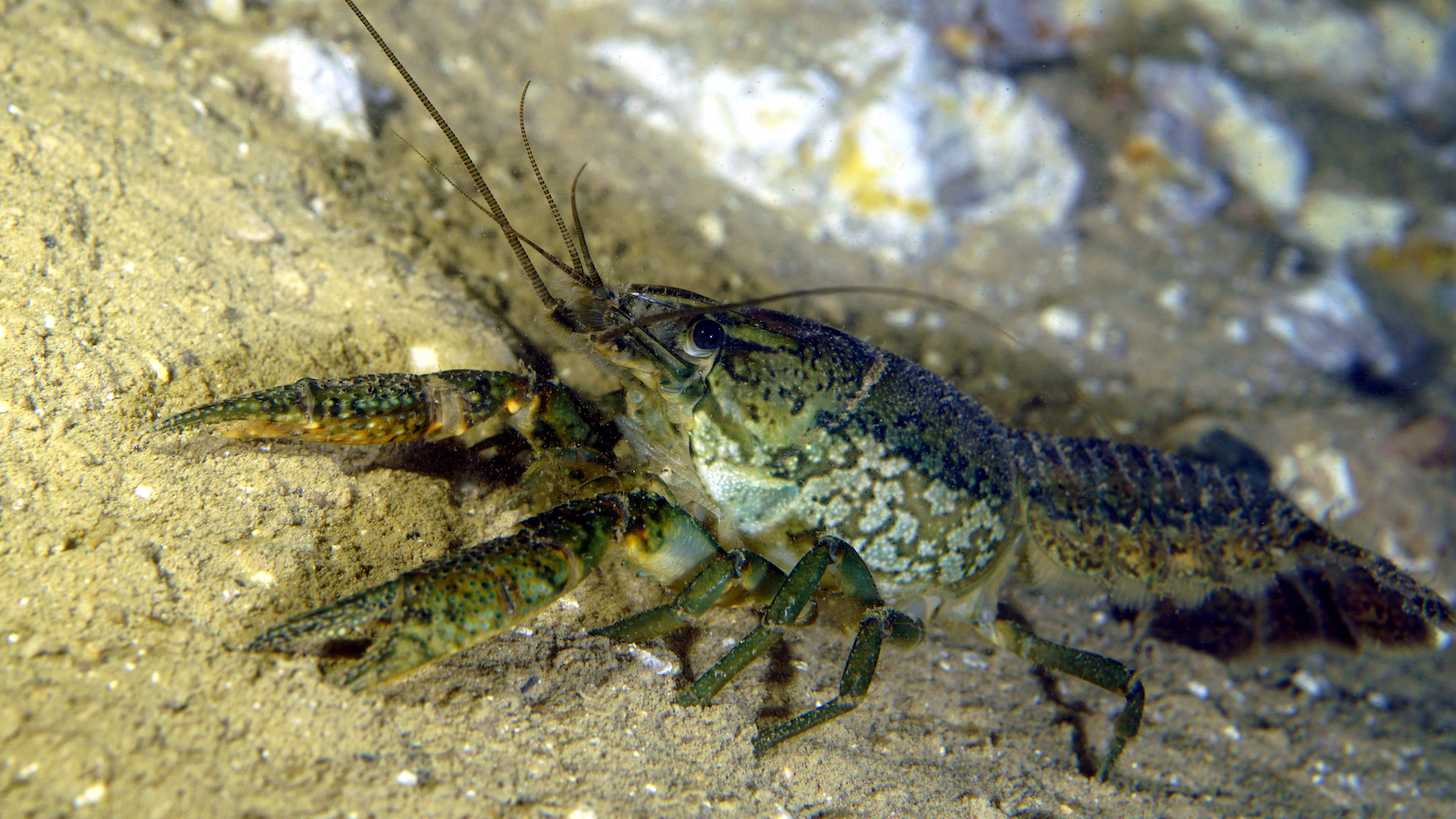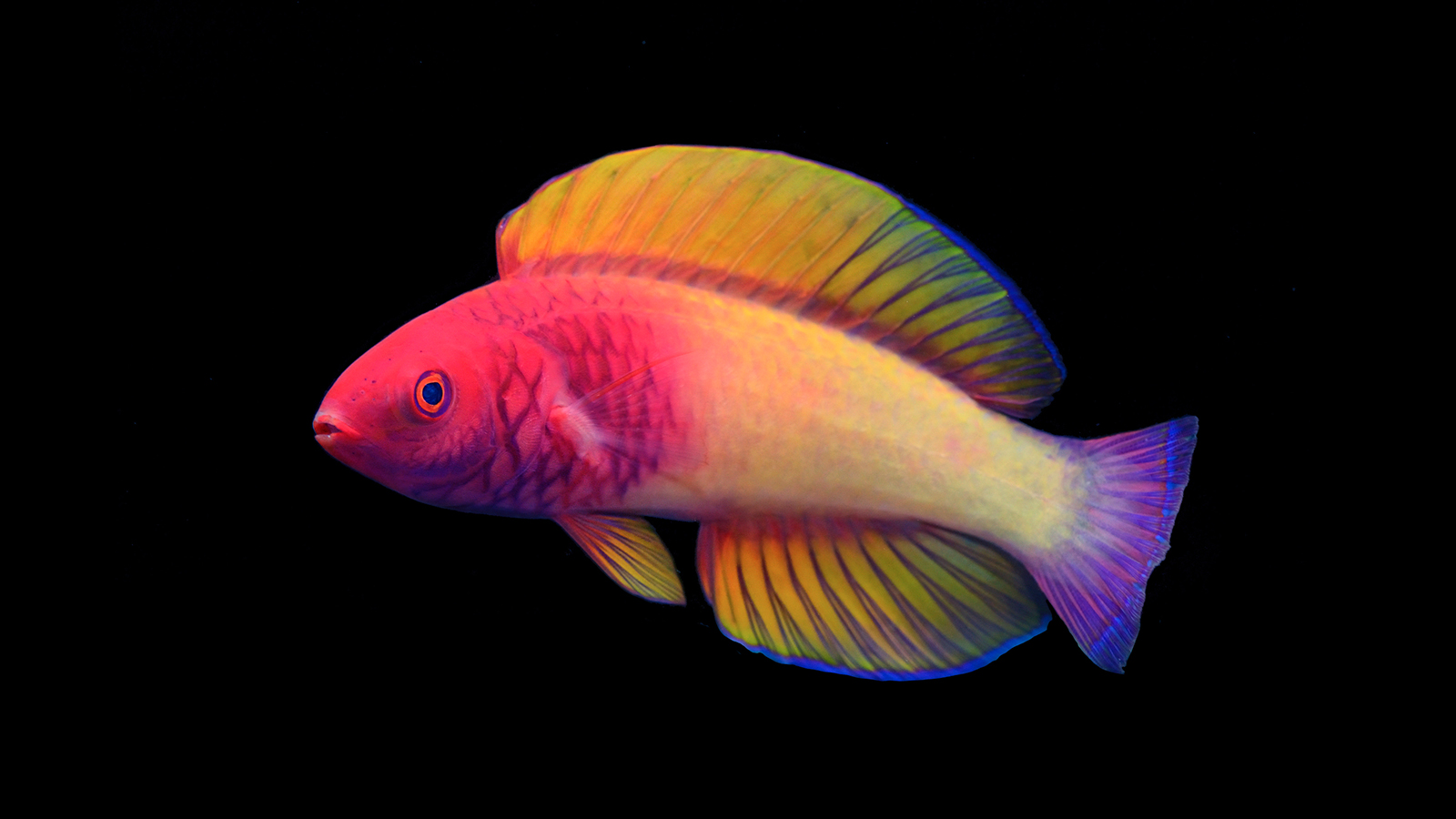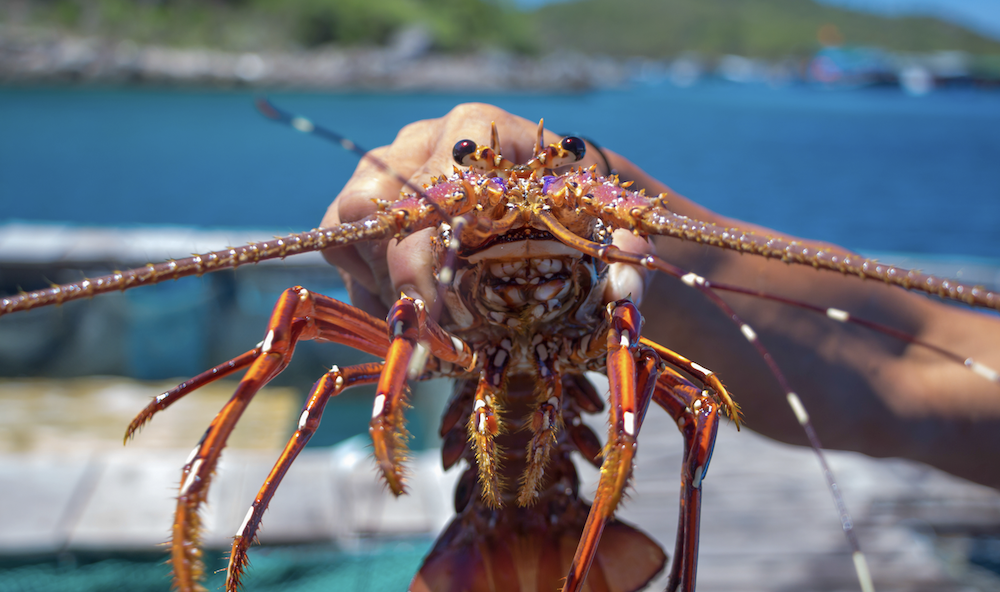The marbled crayfish has been cloning itself for 30 years. Can it teach us about cancer?

- The marbled crayfish is one of few animals that can clone itself. First discovered in the mid-1990s, it has since invaded three continents, pushing out native species.
- Scientists discovered that the unique genome of the marbled crayfish protects it from developing harmful mutations common in clonal organisms.
- Because of its brief evolutionary history and remarkable genome, the marbled crayfish may be an excellent model for studying how clonal genomes, like cancer tumors, evolve.
In the mid-1990s, aquatic pet owners in Germany noticed something strange: Somehow, their solitary female crayfish kept multiplying. Within days, they could have dozens of daughters, all without a single male in sight. Since its discovery in 1995 this crayfish, Procambarus virginalis, known as the marbled crayfish for the speckles on its carapace, has become one of the most studied organisms in decades.
The marbled crayfish reproduces through parthenogenesis, where females lay large clutches of fertile, genetically identical eggs. Essentially, the crayfish clone themselves by the hundreds every few months. Parthenogenesis is a rare process in vertebrates and usually occurs when two different species mate and reproduce. But the marbled crayfish is unique in two ways. First, it is the only decapod (an order of crustaceans including crabs, shrimp, and lobsters) known to reproduce by parthenogenesis. Second, before 1995, it did not exist. With a history younger than the advent of the internet, these crayfish have given researchers a unique opportunity to observe and track the evolution of parthenogenesis in animals.
The perfect invader
Thought to have been introduced in a German pet market in 1995, the marbled crayfish probably spread when owners who didn’t sign up for rapidly self-duplicating pets dumped the crayfish into rivers and lakes, where they thrived and immediately began to outcompete native crayfish. Since then, the marbled crayfish has invaded Asia, Europe, and Africa. In a 2009 paper, two prominent researchers studying the appearance of the crayfish in Madagascar called it “the perfect invader.” The marbled crayfish can store from 200 to 700 eggs at a time. With such incredible fecundity — some six times that of native Madagascar crayfish — it is all but certain to outcompete and devastate native populations.
Unlike often happens with invasive species, researchers identified the marbled crayfish quickly. They have intently tracked its movements ever since. In essentially every situation, marbled crayfish outcompete native species because they can grow and reproduce faster. Plus, by forgoing an entire sex, they save time and energy by eliminating the pesky tasks of courtship and mating. Though the marbled crayfish has yet to be found in the United States, some states are beginning to prepare for its arrival, outlawing the species as pets and establishing monitoring programs.
If the marbled crayfish does make it to our shores, it will be reunited with a close family member, Procambarus fallax, the slough crayfish, which is native to the southern United States. Most researchers agree that the marbled crayfish is a direct descendent of P. fallax. Indeed, some scientists suggest that the two species are so similar genetically that they should be considered a single species. In a 2015 experiment, researchers found that the marbled crayfish and P. fallax recognized each other as sexual partners. However, all the progeny of their doomed affairs turned out to be pure marbled crayfish clones. This reproductive barrier prompted the researchers to suggest that the marbled crayfish be treated as a separate, asexual species. It was in this same study that researchers confirmed all marbled crayfish descended from a single clone discovered in Heidelberg, Germany in 1995.
A unique genome
In 2018, researchers characterized the genome of the marbled crayfish, publishing their findings in Nature Ecology and Evolution. The results showed an astounding genome size of approximately 3.5 gigabase pairs, with more than 21,000 genes. This puts it on par with the size of the human genome. The most intriguing discovery, though, was that the crayfish had three copies of their chromosomes, rather than the usual two. The marbled crayfish genome has two nearly identical copies of a genotype, as well as a third copy of a different but related genotype. This finding supports the theory that two very distantly related P. fallax individuals met in an aquarium one day and mated, producing the marbled crayfish as their highly mutated progeny.
These three sets of genes probably protect the animal from Muller’s ratchet, a phenomenon by which asexual species have an increased susceptibility to genetic disease and mutation. Without sexual recombination to shuffle around the parents’ genomes, harmful and irreversible mutations tend to accumulate in populations, leading to disease and eventual species die-off. (Muller’s ratchet can also explain why inbreeding creates health issues in offspring.)
This combination of multiple genomes and obligate asexual reproduction is common in plants, but rare in animals. The marbled crayfish provides a fascinating new model system to study asexual evolution in animals, and by studying a creature with such a young evolutionary history, scientists hope they might identify critical events for this type of unique speciation event.
Marbled crayfish offer another important research opportunity. The creatures reproduce clonally from a single cell and adapt to various environments quickly. These traits are shared by another type of lifeform of immediate interest to humans: cancer. Researchers promptly noticed the parallel and the outstanding opportunity to use the creature as a model specimen for clonal genomes. So scientists closely study the marbled crayfish genome, watching for any mutations. This research will help us disentangle what types of mutations are most impactful to clonal genome evolution, an insight with implications for cancer research.
Invasive crayfish or succulent lobster?
Invasive species management is defined by an uncomfortable truth: We will never eradicate all invasive species, or even prevent all of them from spreading. Fast-growing, dominant invasive species like kudzu grass, the cane toad, and the zebra mussel show how futile our attempts to do so can be. This reality presents a severe dilemma for conservationists. Should we continue to fight a war we cannot win, or should we try to adapt our environments to these newcomers and mitigate their impacts?
In Madagascar, where native crayfish have threatened fishermen’s livelihood and wreaked havoc on ecological networks, scientists are approaching the problem with a different strategy. Researchers noticed that the marbled crayfish feeds on the snails that host the parasitic flatworm responsible for schistosomiasis, a disease affecting millions in Madagascar. This observation prompted Julia Jones from Bangor University, and Ranja Andriantsoa, a Malagasy biologist and marbled crayfish expert, to start The Perfect Invader project, which aims to explore how marbled crayfish affect human health.
Scientists involved in the project study how the marbled crayfish can be used as a biological tool to reduce the transmission of schistosomiasis. Additionally, they study whether the creature could be useful as a food source for humans. As it turns out, the marbled crayfish is tasty and contains high-quality animal protein. Because this crayfish is so easy to propagate, it could easily be farmed and used to alleviate malnutrition.
Of course, we should not ignore the negative ecological impacts of the creature’s spread. But in a world interconnected by shipping, air transport, and freight lines, invasive species will always manage to hitch a ride beneath our unsuspecting gaze. Why not explore the possible benefits of siding with the enemy? Creative, resourceful scientists have already found several silver linings: an increased understanding of the evolution of cancer tumors, biocontrol for a deadly disease, and a significant, cheap food source. Also, as visitors to some of Berlin’s top restaurants have discovered, the marbled crayfish, found on menus as the “Berlin lobster,” pairs nicely with some butter and garlic.





